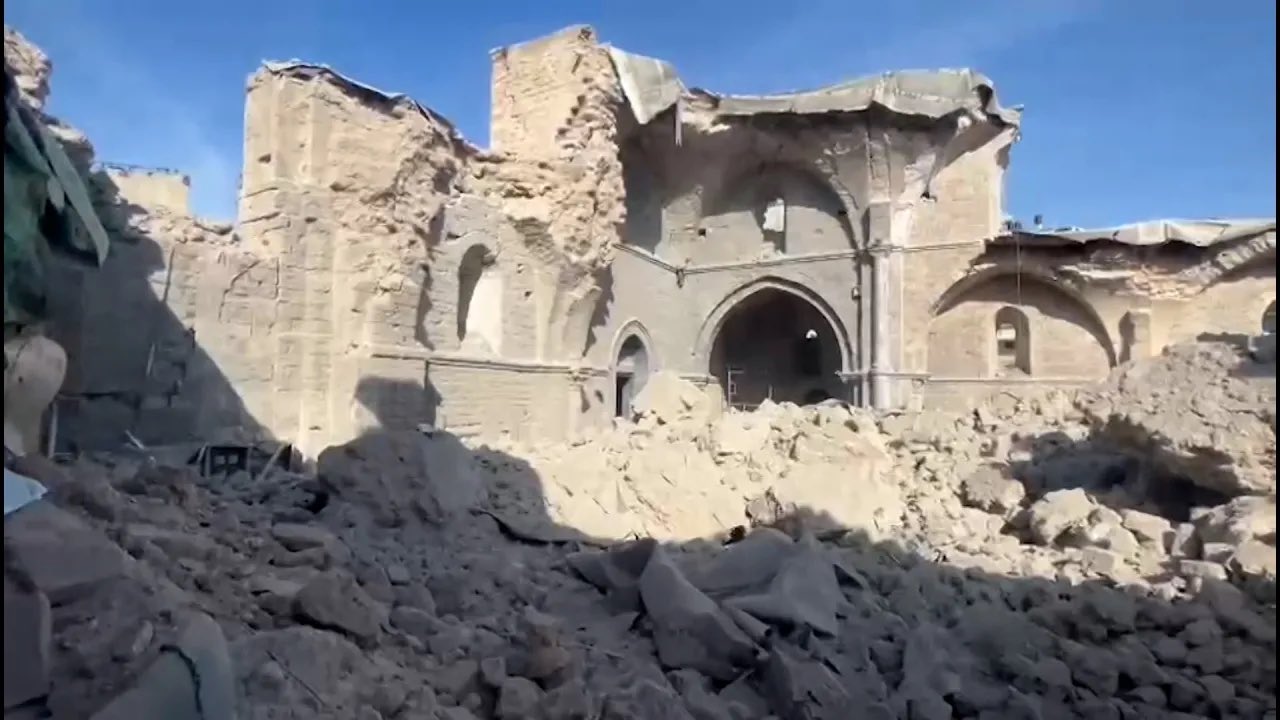Ancient sites, including mosques, churches, and museums have been reduced to rubble in Gaza as Israel continues its genocide in the besieged strip.
More than 200 archaeological and ancient sites in the besieged Gaza Strip have been obliterated out of a total of 325 registered as a result of the ongoing Israeli genocide in the enclave, as confirmed by its authorities on Friday.
The destruction stretched into historical landmarks, from ancient churches and mosques to schools and museums dating back to the Phoenician and Roman ages, Gaza Media Office revealed.
“The ancient and archaeological sites destroyed by the army date back to the Phoenician and Roman ages, others date back between 800 BC and 1,400, while others were built 400 years ago,” the Gaza Media Office said in a statement.
Among the losses are the Great Omari Mosque, the Byzantine church in Jabalia, the Shrine of Al-Khadir in Deir al-Balah city, and the Blakhiya Byzantine cemetery (The Anthedon of Palestine) in northwestern Gaza City.
The Geneva-based human rights group Euro-Med Monitor said Israel targeted Palestinian cultural heritage intentionally, emphasising that the destruction of archaeological and historical monuments was a deliberate act.
The Greek Orthodox Saint Porphyrius Church, the 400-year-old Al-Saqqa House, and the Sayed al-Hashim Mosque, one of Gaza’s oldest, were severely damaged in the Gaza bombardments as well.
The Israeli occupation forces have killed at least 21,672 Palestinians since the start of the genocide in Gaza on October 7, according to the latest figures from Palestine’s health ministry.
The Israeli bombardment of Gaza has left the enclave in ruins, with 60% of its infrastructure severely damaged or destroyed, and over 80% of Gaza’s population, nearly 1.9 million people, now displaced, amid acute shortages of food, clean water, and medicines.







